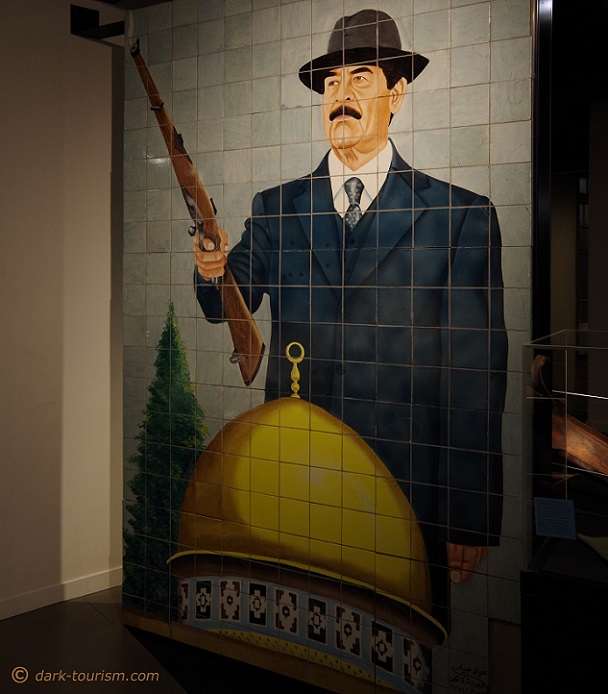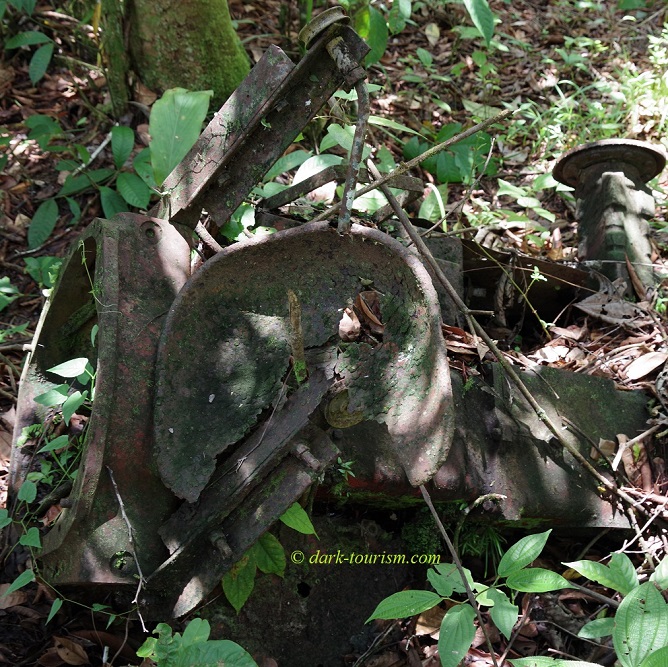Dark Tourism BLOG
This page is intended to provide a more flexible and also more interactive element to dark-tourism.com, which is otherwise more static (more like an encyclopedia). The idea came about after the DT page I used to curate on Facebook was suddenly shut down by the company (full story here). So I’m continuing here – with regular blog posts, either featuring particular dark-tourism destinations or marking specific days in dark history and sometimes reacting to current affairs that are in some way relevant to this site’s topic.
sign up to the newsletter!

Saddam Hussein, “We got him!”
On this Day, 17 years ago, on 13 December 2003, the former president of Iraq, Saddam Hussein, was captured. He had disappeared from public view shortly after the US-led invasion of Iraq in the Second (American) Gulf War entered its final stages. When US troops emarched into the capital Baghdad he was nowhere to be found.
The manhunt for Saddam Hussein, in the

Dark Tourism and Bars
The topic of this blog post was decided by the most recent theme poll, where it sailed to a clear victory over all the other options by a huge margin (as reported in last Sunday’s newsletter). So here we go.
As a couple of commentators noted, the word ‘bars’ is of course lexically ambiguous, and exploiting that double meaning had been my intention all along. So let’s begin with the darker side of bars – those you sit behind in prisons and similar institutions.
The first

Bhopal
On this day, or rather the coming night, 36 years ago, on 2/3 December 1984, the Bhopal disaster began to unfold. Just after midnight a leak and rise in pressure at a tank containing the pesticide MIC (methyl isocyanate) was noticed at the Union Carbide plant in the Indian city of Bhopal. Owing to a combination of inadequate technology, poor maintenance, malfunctions of safety devices and human error, some 40 tons of the poison gas were released over the next two hours and drifted in a low, ground-hugging cloud into the residential districts next to the plant.
The effects of

The Mirabal Sisters
Today, 25 November, is International Day for the Elimination of Violence against Women. That this particular date was chosen by the UN (in 1999) to stand for this cause is no coincidence. Because it was on this day, 60 years ago, that the Mirabal sisters were assassinated in the Dominican Republic on orders of the country’s then dictator Rafael Trujillo.

Assassination of JFK, new poll
On this day, 57 years ago, on 22 November 1963, the 35th president of the United States, John F. Kennedy, was shot dead by the assassin Lee Harvey Oswald in Dallas, Texas.
I visited the spot on Dealey Plaza on the western edge of downtown Dallas as part of my USA South-West trip back in 2012, when I took the following photos. This first one shows Dealey Plaza seen from the

Jonestown
On this Day, 42 years ago, on 18 November 1978, the Jonestown massacre happened.
Jonestown was a religious-cum-socialist utopian agrarian commune called “Peoples Temple” and led by cult leader Jim Jones who, after getting into increasing trouble at home in the USA, had relocated with his flock to this remote spot in Guyana, South America. In 1978 US congressman Leo Ryan visited the place at the request of concerned relatives and during
